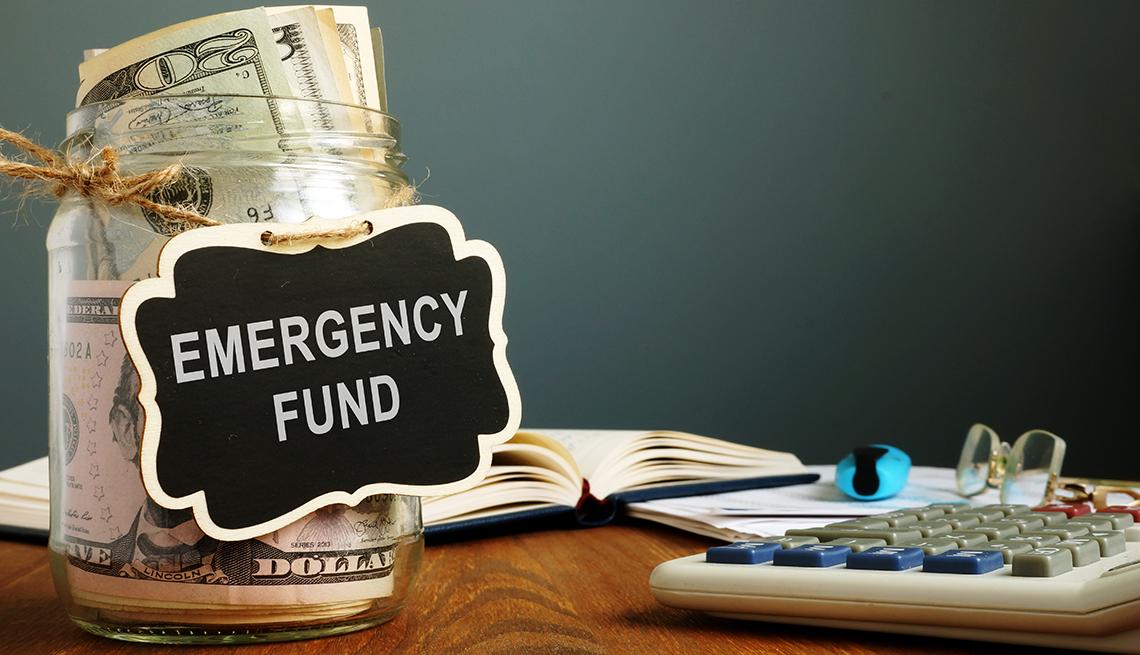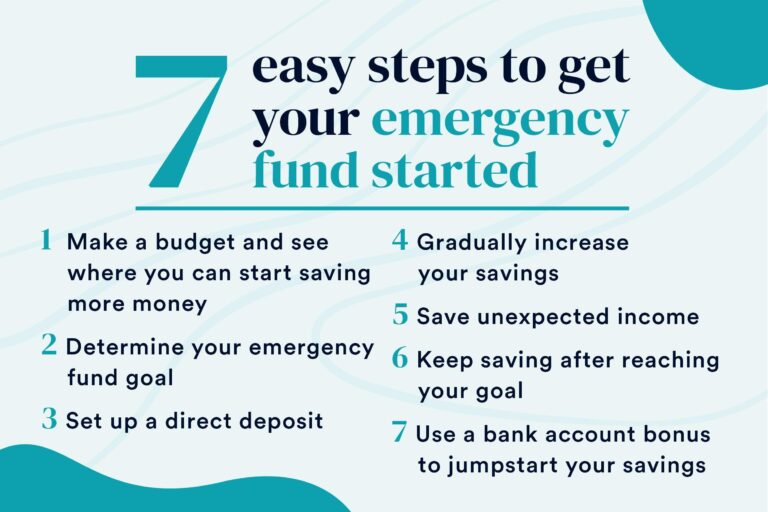Let’s face it, money can sometimes feel like it’s auditioning for a role in a magic trick — now you see it, now you don’t! For those of us living on a low income, the concept of stashing away extra cash for an emergency fund might seem as elusive as finding a needle in a haystack after the haystack grew legs and took off running. However, the good news is that building an emergency fund isn’t just a wild dream; it’s absolutely possible with the right strategies, a sprinkle of determination, and perhaps a dash of humor. In this article, we’ll dive into practical, actionable tips to help you put the “fun” in “fund” without needing a financial wizard’s hat. Ready to turn those pennies into a safety net? Let’s get started!
Saving Pennies with Purpose: The Art of Splurge-Free Living
One of the first steps to building an emergency fund on a low income is to track every penny. It sounds like a lot of work, but it’s crucial. Without knowing where your money goes, it’s hard to save any. Try using budget apps or a simple spreadsheet. You might be amazed to find small expenses that add up. Cutting out these “tiny luxuries” can make a difference without feeling like major sacrifices.
- Cancel unused subscriptions: Do you really need five streaming services?
- Cook at home: Restaurant bills can add up fast!
- Embrace thrift shopping: It’s like a treasure hunt with a happy wallet ending.
Another savvy trick is to make saving automatic. Consider setting up a small, consistent transfer from your checking to your savings account. A little can go a long way here. Even if it’s just $5 a week, it adds up over time. As the saying goes, every little bit helps.
| Monthly Save Amount | Annual Total |
|---|---|
| $5 | $60 |
| $10 | $120 |
| $20 | $240 |
The savings may look small initially, but watch them grow over time. Before you know it, you’ll have a cushion for those unexpected life hiccups!

Coupon Clipping and Other Strategies That Would Make Grandma Proud
Remember when grandma used to sit at the kitchen table, scissors in one hand, a cup of tea in the other, and piles of coupons spread out like a bustling map of savings? While coupon clipping might seem like a relic of the past, it’s still a goldmine for stretching your dollars. Start off by gathering weekly ads from your local grocery stores and cut out coupons for essentials like bread, milk, and eggs. Don’t forget to check online coupon sites like RetailMeNot, Coupons.com, and your favorite store’s apps. Sprinkle a little nostalgic charm as you save those extra pennies—trust us, grandma would be cheering you on!
But hey, why stop at coupon clipping when you can add more frugal tricks to your repertoire? Try these additional strategies to boost your savings:
- Buy in bulk when items are on sale and freeze what you can’t use right away.
- Embrace the art of meal planning to avoid impulse buys and wasted food.
- Check for cash-back offers on household items using apps like Rakuten and Ibotta.
- Make a habit of shopping at thrift stores and yard sales for non-perishable items.
- Challenge yourself to a “no-spend” day or week to curb discretionary expenses.
| Strategy | Potential Monthly Savings |
|---|---|
| Coupon Clipping | $25-$50 |
| Bulk Buying | $20-$30 |
| Cashback Apps | $10-$20 |
| No-Spend Challenges | $30-$50 |

Turning Side Hustles into Low-Key Superpowers
Turning your hobbies and skills into side hustles can secretly supercharge your financial situation. It’s like having secret superpowers but way lower key. Imagine earning extra cash while doing what you love. Whether you’re into baking, pet sitting, or even freelance writing, these activities can be a goldmine. Some ideas to get you started:
- Sell handmade crafts: Open an Etsy shop and sell your amazing creations.
- Freelance work: Use sites like Upwork to offer your skills, from graphic design to writing.
- Pet sitting: Combine your love for animals with extra income through services like Rover.
Once you have your side hustle rolling, the extra income can be funneled straight into your emergency fund. Magic, right? Here’s a handy table to keep track of your extra earnings and how they contribute to your savings goal:
| Activity | Monthly Earnings | Contribution to Emergency Fund |
|---|---|---|
| Freelance Writing | $150 | $100 |
| Pet Sitting | $200 | $150 |
| Handmade Crafts | $100 | $80 |

Emergency Fund DIY: Recycling Your Cents into Safety Nets
Think of all the small things you spend money on every day. Coffee runs, impulse buys at the checkout line, and that extra subscription service you never use. By cutting back on these little expenses, you can start piling up the pennies. Here’s a challenge: for one month, every time you decide not to buy an unnecessary item, put the money you would have spent into a jar. At the end of the month, you might be surprised at how much you’ve saved! This helps turn those tiny cents into safety nets.
Quick Savers:
- Brew coffee at home.
- Cancel unused subscriptions.
- Cook meals instead of eating out.
- Use cash-back apps.
| Expense | Savings/Month |
|---|---|
| Morning Coffee | $30 |
| Lunch Out | $50 |
| Unused Gym Membership | $20 |
Q&A
Q: What’s the first step in starting an emergency fund when living on a tight budget?
A: The first step is to embrace the art of budgeting. Think of it like a scavenger hunt for hidden cash. Track every dollar you earn and spend, and soon you’ll discover those elusive funds that can be rerouted to your emergency stash. Spoiler alert: Cutting out daily lattes may reveal more treasure than you think.
Q: How can I save money when I feel like I’m already living frugally?
A: Get creative with your frugality. Channel your inner DIY enthusiast. Swap expensive nights out for Netflix marathons, or your gym membership for a scenic jog in the park. Also, look out for discount sites and grocery store sales. Sometimes, turning frugal living into a game can make the challenge more fun — like a treasure hunt for discounts!
Q: Are there easy ways to automate savings?
A: Yes! Automation is your best friend. Set up automatic transfers to your savings account every payday. Think of it as a non-negotiable bill, like that questionable magazine subscription you can never seem to cancel, but way more beneficial. If you don’t see it, you won’t miss it!
Q: What should I do if my income is irregular?
A: Embrace irregularity — like that overly eccentric relative who shows up to family events in costumes. On good income months, stash away a higher percentage. On lean months, adjust as necessary. Creating a ‘buffer fund’ alongside your emergency fund can also help smooth out the income bumps.
Q: How can I earn a little extra without sacrificing my sanity?
A: Side hustles are the modern-day equivalent of finding a $20 bill in your old jeans. Consider gigs that play to your strengths, whether it’s freelancing, pet sitting, or selling your homemade crafts. Just make sure it’s something you enjoy (or at least don’t hate). This way, it’s more like a hobby with perks rather than another dreaded job.
Q: Any advice for making the process less painful?
A: Jazz it up with small rewards. Set milestones and treat yourself when you reach them — perhaps a self-high-five or dancing around your living room to celebrate depositing that extra $50. Remember, you’re building a safety net. Think of it as securing an insurance policy for your future peace of mind. Your future self will thank you!
Q: How much should I aim to save in my emergency fund?
A: The classic advice is three to six months’ worth of living expenses. For many on a low income, that might seem like the financial equivalent of climbing Everest. Start with a smaller, more attainable goal like $500, then build from there. As you see progress, you’ll feel more motivated to keep going. It’s a marathon, not a sprint — albeit a marathon involving strategically dodging spending potholes.
Q: What should this emergency fund be used for?
A: The emergency fund is for genuine emergencies — think unexpected medical bills, car repairs, or a sudden job loss. It’s not for spontaneous trips to Ibiza or last-minute concert tickets (however tempting!). Having clear rules about what constitutes an emergency can keep you disciplined. Just remember, using it wisely means fewer financial freak-outs and more adulting gold stars in the long run.
By approaching savings with humor and a positive attitude, building an emergency fund on a low income can transform from a daunting task into an empowering journey. You’ve got this!
Future Outlook
building an emergency fund on a low income might seem like training for a financial Olympic event—challenging, sometimes sweat-inducing, but ultimately rewarding. By making small, strategic adjustments, keeping a hawk-like eye on your expenses, and embracing the power of persistence, you can go from financial couch potato to emergency fund champion. Remember, every penny saved is one less penny you’ll have to hastily search for between couch cushions when a rainy day comes. So, take a deep breath, have a laugh at the absurdity of life’s little financial tightrope walks, and start building that emergency fund—your future self will thank you (and probably offer you a high-five).


